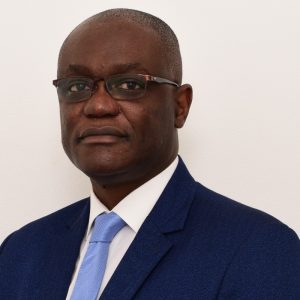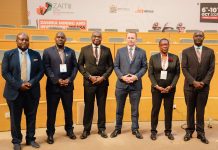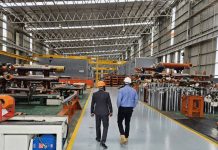It’s been a very promising year for mining in Zambia, with the sector attracting US$3.4 billion in investment commitments, doubling the pledges made in 2022.
As we reflect on 2023, Mr Sokwani Chilembo, CEO of the Zambia Chamber of Mines, tells us about the investments that have been made and the projects that are already steaming ahead, and shares his insights on what is needed to ensure the country continues on this growth trajectory.
As we look to the year that is now almost behind us, how would you describe Zambia’s mining sector’s progress in 2023?
It’s been a very good year, both in terms of investment commitments and progress on the ground. We’ve seen US$3.4 billion in investment commitments in 2023, compared to the US$1.7 billion that was pledged last year. From 2021 to 2023, a cumulative total of close to US$1 billion of capital expenditure has already been spent on turning existing operations around. We are essentially two years into a new approach to mining in Zambia, one that prioritises the long-term growth of the industry, knowing that it is the engine for our country’s future development, and it’s been very heartening to see several exciting mining projects coming to the fore.
It is vital that we continue along this path, and that our actions – in terms of the laws and regulations we put in place – are consistent with our message, that we want a flourishing mining industry. This is what investors want to see: that we are consistent, and can hold our course towards attaining our strategy of radically increasing mining production by 2030. If we create a stable and conducive environment, the investment will come.
Please would you give us more detail on the investment commitments made this year?
First, we had the announcement by China Nonferrous Mining Corporation (CNMC) of a US$1.3 billion investment into its various operations in the country. This includes an investment of US$200 million dollars into the Kasamba open cast mine in Lufwanyama District, which will supply Sinoleach’s operations in Chambishi. This investment will see Sinoleach almost doubling their production to around 20,000 tonnes of contained copper per annum.
Then, we heard about the US$500 million investment in expanding operations at the NFCA Mine in Chambishi, which will bring on board an additional 30,000 metric tonnes of copper per annum. The asset they’ll be developing has some strong cobalt traces, so this investment will reestablish cobalt production at Chambishi Mine.
Chambishi Copper Smelter will also significantly expand its capacity to keep pace with the increase in copper ore arriving at its operations.
In addition, Barrick Lumwana has committed to investing US$2 billion into a new greenfield operation in Northwestern Province, called Kamisengo. This is expected to produce around 110,000 tonnes of copper each year.
And, there is the very historic reactivation of Shaft 28 at Luanshya, where US$100 million will be spent on dewatering alone. On completion of the dewatering there will be an additional underground investment of approximately US$500 million, which will move Luanshya from its current 40,000-tonnes-per-annum production levels, to about 70,000 tonnes.
The reactivation of Shaft 28 is also very welcome because it’ll be coming on-stream to replace Luanshya’s Baluba shaft, which is being decommissioned. That’s a very big win. I think if we can see Shaft 28 producing again, it may not be the only old shaft on the old copperbelt that can come back to life.

Some members of the public have been complaining that the benefits from an adjusted mining policy have been slow to materialise. What would you say to those who expected more from the mining sector sooner?
Firstly, nothing in mining happens quickly. A large mine is a huge piece of infrastructure, and just building it – let alone discovering the resource in the first place – takes years. So, even if all the investment commitments were made on day 1, it would still take quite some time for us to actually see the benefits on the ground. But when they do come, they will be massive. We must just hold our course.
Our particular problem in Zambia was that the commitments did not come on day 1. Too much damage had been caused to our reputation for that. I think it’s important to try and understand the sheer impact of the previous Government’s actions, which led to – amongst other things – the legal and business challenges [at both Konkola Copper Mines (KCM) and Mopani Copper Mines] in Copperbelt Province, and made the world quite unsure about the legal security of tenure in Zambia.
According to the Secretary to the Treasury, had we not tampered with the mining tax regime, Zambia would have garnered an additional US$8 billion dollars in revenue to the fiscus over the last five or six years. The country’s debt overhang has also limited how much Government has been able to do in terms of making Zambia more competitive, because servicing debt and incentivizing investment into the mining sector are, essentially, competing obligations.
It didn’t help that we also had major challenges with power generation last year, along with operational challenges caused by very wet weather. All these things in combination have led to a slower recovery than we had hoped. They have also made us a riskier location in which to allocate capital.
If you’re a stable jurisdiction, you can swiftly remedy challenges like this when they come up. But if there’s a perception of instability, it takes longer. It’s only natural that reengagement with Zambia will be more cautious, and every new investor will be taking the time to dot their i’s and cross their t’s as a consequence.
This year Oxford Economics’ and Control Risks’ Africa Risk-Reward Index ranked Zambia as the most improved mining jurisdiction on the continent, so we are moving in the right direction. But we must understand that the damage to the country’s reputation was considerable, costing us a lot in terms of time and opportunity, and we must guard against anything like this happening again.
How might we succeed in ramping up production – both at these two key operations, and elsewhere in the country?
We are heartened by the recent announcement of a new investor in Mopani. Just prior to this announcement, Mr. Charles Sakarya [CEO of Mopani] made a statement in which he said that, once the investment is made, Mopani will be pushing toward the 220,000 tonne [of copper per annum] mark. We also expect KCM’s production to move substantially upwards. Looking at the turnaround capital and the new investments that have been pledged, we are in pretty good shape to surpass the 1.5 million-tonne mark in the medium term.
Now, the focus has to be on attracting capital into greenfield exploration to build up our ore reserves. Zambia needs to attract at least US$200 million a year in exploration capital – and this is where it is mission critical that Zambia become more competitive.
The majority of investment will need to come from outside the country. Hopefully this can be supplemented by some local exploration capital from pension funds and other local risk capital providers so that we can map the country fast enough to be able to build our reserves and meet Government’s three-million-tonne-per-year copper ambitions.
“Zambia needs to attract at least US$200 million a year in exploration capital – and this is where it is mission critical that Zambia become more competitive.”
Have there been any new developments in the field of mineral exploration this last year?
Government’s decision to allocate ZMK160 million to aerial geophysical surveys within the old copperbelt is very significant. We know there’s a high concentration of targets there, and doing this survey is critical in terms of speeding up exploration work to build a pipeline of new drilling targets in dense areas as quickly as possible. These are likely to be quite large and deep assets – along the lines of what we’re seeing at Kobold Metals’ Mingomba project – so focusing on this high potential zone is a wise move.
We’re also very glad to see Anglo American and Arc Minerals’ US$90m Zambia exploration joint venture in North-Western Province finalised. We’ve been waiting for this since last year’s Mining Indaba, so we’re keen to see it start delivering results.
In a recent interview, you mentioned that successful mining jurisdictions in this part of the world have one thing in common: stability. You also pointed out that Botswana and Namibia in particular have “consistently attracted the appropriate amounts of capital to keep their mining sectors contributing very significantly to their economies and also to maintain reasonable growth momentums.”
What have these two countries done that Zambia could learn from?
Consistency and predictability – that’s the biggest learning. Botswana and Namibia have been leading the way for a very long time, and I think the critical thing that they have done is to lower their countries’ risk perception and – in tandem – to adjust their Effective Tax Rate. By adjusting their average Effective Tax Rates (ETR) to globally competitive levels, they’ve more or less matched countries that are sources of capital into Africa. This is something that we must all consider if we’re to get a slice of that pie, because mining is becoming more geologically complex (as easily accessible resources have been mined out already) – and much more costly.
Are there any barriers to Zambia adjusting its ETR, or introducing other measures that have contributed to these countries’ success?
Yes, debt has traditionally prevented us from offering a more competitive ETR, as Botswana and Namibia have done. We are all watching and waiting for Zambia’s commercial debt negotiations to be completed swiftly, because that’s the key constraint to us reaching that level of competitiveness. Government has competing needs to address, but there will be more headroom once the debt is dealt with.
Another competitive element within these jurisdictions is that they are very, very strict on legal compliance, and environmental and safety regulations, and Zambia has to begin to match them in those areas as well. There’s currently a lot of theft in transit of ore, for example, which has an increased security cost for operators. This is also where the increased allocation of resources to the Ministry of Mines becomes key. The State needs to take steps to make the business environment welcoming and comparable to other jurisdictions.
Greater adherence to the rule of law and to environmental and safety regulations drives down the cost of capital – and not just in the mining sector. When you get it right in mining, because the mining sector is such a significant component of the economy, the cost of capital comes down for everybody else in the economy.
“When you get it right in mining, because the mining sector is such a significant component of the economy, the cost of capital comes down for everybody else in the economy.”
What else needs to happen in order for Zambia’s mining sector to realise its full potential?
Zambia has very strong mineral potential across the spectrum: from critical minerals, to gold, to commodities like uranium, which is a low carbon energy option with demand that’s growing as we see the global energy mix being corrected. There’s also immense opportunity for medium and small-scale mining of gemstones, thanks to increased exploration.
In order to build our mineral reserves fast enough – and to see more local development of mines – we need formalisation of the structures and the pathways for accessing the capital needed to carry out formal exploration. Because many future actors could be local, if we get this right.
A big part of this is linking mining to the capital markets. We need to get that formula right so that there is a local pipeline of prospects which are available to larger players who can accelerate and advance them, as is the practice across the world. As this seems unlikely soon, accessing more developed regional capital markets is the way to go until an appetite for exploration issuances can be developed locally. This is what United Capital Fertilisers (UCF) of Kafue recently did in floating a US$500 million Bond in Botswana.
The success of Zambia’s mining sector comes down to becoming as competitive as possible, as quickly as possible. We have a once in a 100-year opportunity to supply the world with the minerals of the future, and the benefits we reap will be directly determined by the decisions we take. Understandably, there’s lots of pressure for immediate results from the public. But we must hold firm. Every rule we make, and every action we take, must be consistent with the message that we have sent to the world – that Zambia is open for investment once more.
























Well written and very insightful article.
Thanks for reading, Mr Mbewe. Do please let us know if you’d like to receive an email each time a new article is published.
Great article👌
Insightful
Very insightful. Mining is mega business and not merely a political drive. Zambia’s mineral beneficiation has for along time suffered sheer neglect. If harnessed well, mining has a potential to generate sufficient local capital.
Andrew Mukupa
langhamih@gmail.com
Why do we still talk of potential when commercial copper mining on the Copperbelt started as far back as 1925?
How much of the $3 bn dollars pledge in the mines will go on value addition to these minerals?
Why didn’t the $14bn FDI that ca m.h e to the mines 2000 to 2014 fail to turn around Zambia’s economy?
Why are multinational corporations always the winners and recipient countries of FDI are economically struggling dedpite 100 years of mining?
Interesting and well articulated article thanks for the insight…